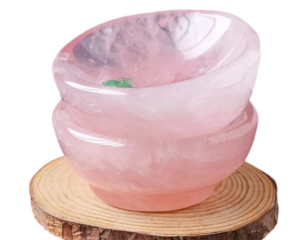The blood-red color of pyrope garnet is due to its iron and chromium content. It rarely has inclusions, but when present they are rounded crystals or have irregular outlines. As with all garnets, pyrope has no cleavage, and fracture is subconchoidal to uneven.
Pyrope garnet is found in volcanic rock and alluvial deposits, and may, along with certain other minerals, indicate the presence of diamond-bearing rocks. Localities include Arizona (USA), South Africa, Argentina, Australia, Brazil, Burma, Scotland, Switzerland, and Tanzania.
Pyrope comes from the Greek pyrops, meaning fiery. Swiss and South African pyropes are lighter red than stones from Bohemia, where pyrope jewelry has been made for over 500 years.
Perfectly transparent, clear, uniformly colored crystals of pyrope garnet were popular for jewellery in the 18th and 19th centuries.



























Leave a Reply
You must be logged in to post a comment.